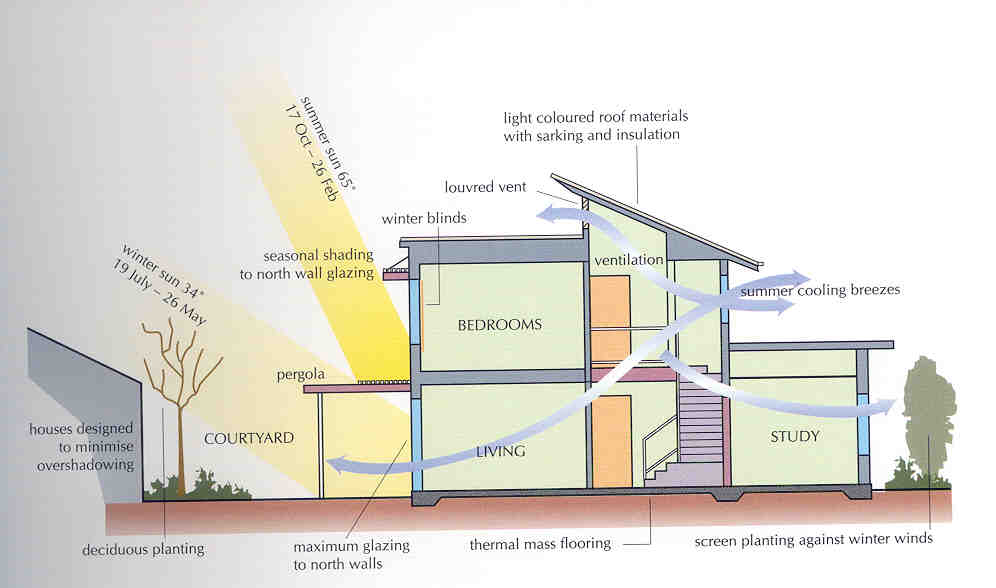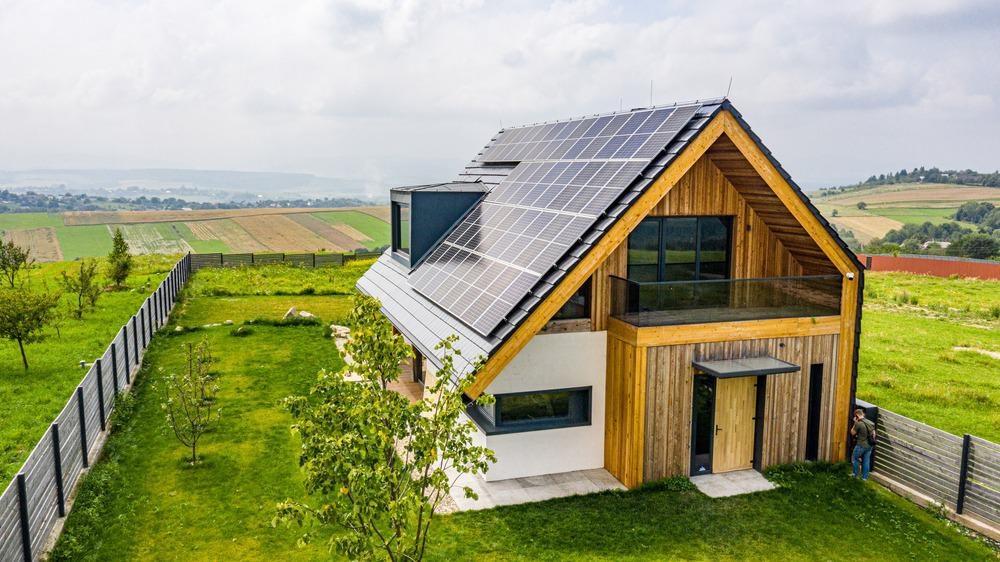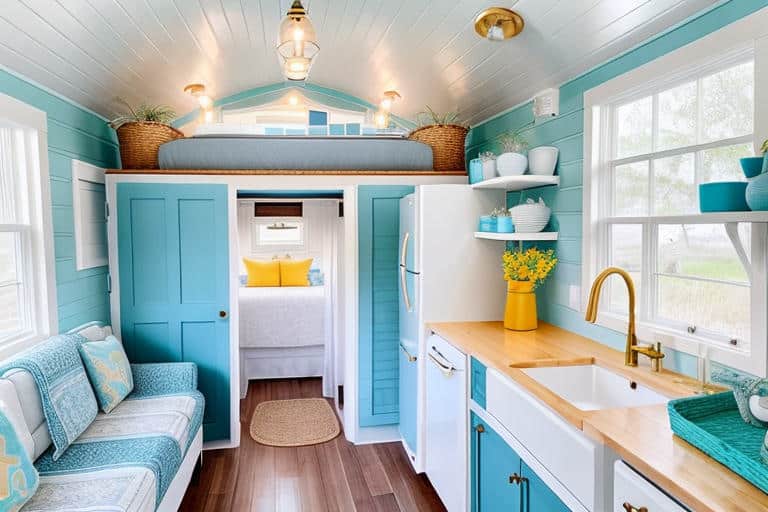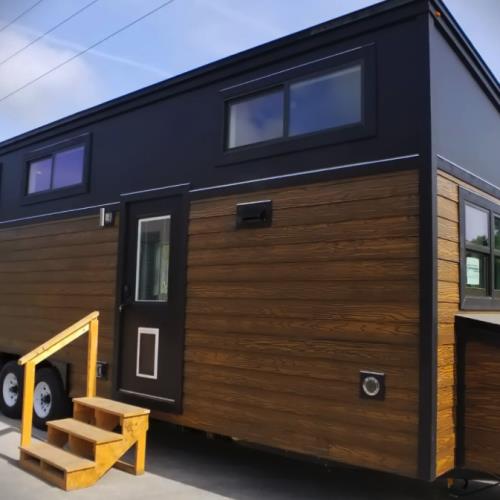
In today's environmentally conscious world, making energy-efficient home improvements is not only a responsible choice, but also a practical and cost-effective one. This article presents eight essential upgrades that can help homeowners create a greener future.
From installing solar panels and upgrading insulation to utilizing energy-efficient appliances and LED lighting, these solutions offer tangible ways to reduce energy consumption and lower utility bills.
By implementing these improvements, homeowners can play a significant role in preserving the environment while enjoying the freedom of a more sustainable lifestyle.
Installing Solar Panels
The installation of solar panels is a pivotal step towards achieving a more sustainable and energy-efficient home. By harnessing the power of the sun, homeowners can significantly reduce their reliance on traditional energy sources and decrease their carbon footprint.
Solar panel installation not only provides a clean and renewable source of energy but also offers long-term financial benefits. With government incentives and tax credits available, the cost of installing solar panels has become more affordable than ever. These incentives can help offset the initial investment and provide homeowners with a substantial return on their investment in the form of reduced energy bills.

Additionally, solar panels increase the value of a home and can attract eco-conscious buyers. Therefore, taking advantage of solar panel installation and government incentives is a practical and sustainable solution for homeowners looking to create a more energy-efficient and environmentally-friendly living space.
Upgrading Insulation
When it comes to creating an energy-efficient home, upgrading insulation is a crucial step. There are various types of insulation available, such as fiberglass, cellulose, and spray foam, each with its own benefits.
Types of Insulation
One effective way to enhance energy efficiency in homes is by upgrading the insulation using a variety of high-quality materials.
Upgrading insulation not only helps reduce energy consumption but also improves indoor comfort and lowers utility bills.
There are different types of insulation materials available in the market, each with its own unique properties and installation process.
Fiberglass insulation, made from glass fibers, is one commonly used option. It is affordable, easy to install, and provides good thermal resistance.
Another option is cellulose insulation, which is made from recycled paper and offers excellent soundproofing properties.
Spray foam insulation is another popular choice as it creates an airtight seal and provides superior insulation.
When upgrading insulation, it is important to consider the specific needs of the home and consult with professionals to determine the most suitable material and installation process.

Benefits of Upgrading
Upgrading insulation offers numerous benefits, including improved energy efficiency, enhanced indoor comfort, and reduced utility costs. By investing in energy-efficient insulation, homeowners can significantly decrease their energy consumption and lower their carbon footprint.
Upgraded insulation helps to prevent heat loss during the winter and heat gain during the summer, resulting in a more comfortable living environment year-round. Additionally, by reducing the amount of energy needed for heating and cooling, homeowners can save money on their utility bills.
Upgrading insulation is a cost-effective solution that can provide long-term benefits, as it helps to maintain a consistent temperature within the home, reducing the need for additional heating or cooling appliances. For those seeking energy-saving solutions, upgrading insulation is a practical and effective way to improve the overall energy efficiency of their homes.
Cost-Effective Insulation Options
To achieve cost-effective insulation upgrades, homeowners can explore a variety of options for improving energy efficiency in their homes. Making these upgrades not only helps reduce energy consumption and utility bills but also contributes to a greener future. When considering insulation options, homeowners should prioritize the use of energy-efficient roofing materials and green building materials. These options not only provide excellent insulation but also have a minimal impact on the environment.
Here are three options to consider:
- Spray Foam Insulation: This type of insulation expands to fill gaps, providing an airtight seal and preventing heat loss.
- Cellulose Insulation: Made from recycled materials, cellulose insulation is an eco-friendly option that offers good thermal performance.
- Reflective Insulation: These materials reflect heat away from the home, reducing the need for air conditioning and improving energy efficiency.
Energy-Efficient Appliances
When considering the pursuit of a greener future, it is crucial to invest in energy-efficient appliances. Energy-efficient appliances not only reduce your carbon footprint but also help you save on energy bills.
One area where energy efficiency can make a significant impact is in HVAC systems. By opting for energy-efficient HVAC systems, you can ensure that your heating and cooling needs are met while minimizing energy consumption.
Smart home technology can also play a vital role in promoting energy efficiency. With smart devices, you can control and monitor your appliances remotely, optimizing their energy usage. From smart thermostats that learn your preferences to energy-efficient refrigerators and washing machines, there are various options available to make your home more eco-friendly.
Programmable Thermostats
One effective way to optimize energy usage in your home is by regularly adjusting the temperature with a programmable thermostat. This smart home technology allows you to set different temperatures for different times of the day, ensuring maximum comfort and energy efficiency.
Here are three benefits of using programmable thermostats:
- Energy management: Programmable thermostats enable you to schedule temperature adjustments based on your daily routine. You can lower the temperature when you're away from home or asleep, saving energy and reducing your utility bills.
- Increased convenience: With programmable thermostats, you can control the temperature of your home remotely through your smartphone or other devices. This allows you to adjust the settings even when you're not at home, providing you with freedom and flexibility.
- Environmental impact: By optimizing energy usage, programmable thermostats contribute to a greener future by reducing your carbon footprint.
Investing in a programmable thermostat is a practical and cost-effective solution to manage your energy consumption and create a more sustainable home environment.
LED Lighting
LED lighting is a cost-effective option for homeowners looking to save on energy bills.
LED bulbs have a longer lifespan compared to traditional incandescent bulbs, reducing the need for frequent replacements.
Additionally, LED lights are highly energy-efficient, using significantly less electricity to produce the same amount of light.

Making the switch to LED lighting can lead to substantial energy savings and contribute to a greener future.
Cost-Effective LED Bulbs
The implementation of cost-effective LED bulbs has become an essential step in achieving energy efficiency and sustainability in modern homes. LED lighting offers numerous benefits, including reduced electricity consumption and longer lifespan compared to traditional incandescent bulbs. Here are three reasons why cost-effective LED bulbs are a smart choice for homeowners:
- Energy efficiency: LED bulbs are highly energy efficient, converting a higher percentage of electrical energy into light and wasting less energy as heat.
- Cost savings: By reducing electricity consumption, LED bulbs can significantly lower energy bills, saving homeowners money in the long run.
- Durability: LED bulbs have a longer lifespan compared to traditional bulbs, which means fewer replacements and less waste.
Longevity and Durability
LED lighting offers exceptional longevity and durability, making it an ideal choice for energy-efficient home lighting solutions. When it comes to green building materials and sustainable construction methods, LED lighting stands out as a reliable and long-lasting option. Unlike traditional incandescent bulbs, LED lights can last up to 25 times longer, reducing the need for frequent replacements. This not only saves you money in the long run but also reduces the environmental impact associated with manufacturing and disposing of old bulbs.
LED lights are designed to withstand shock, vibrations, and extreme temperature changes, making them suitable for various applications both indoors and outdoors. By choosing LED lighting, you can enjoy energy efficiency and peace of mind knowing that your lighting solution will last for years to come.
Energy Savings and Efficiency
With its impressive energy savings and efficiency, LED lighting is a top choice for homeowners looking to reduce their carbon footprint and save on electricity costs. Here are three reasons why LED lighting is a must-have for energy-conscious individuals:
- Energy efficiency: LED bulbs convert most of the energy they consume into light, wasting very little as heat compared to traditional incandescent bulbs. This translates to significant energy savings and reduced electricity bills.
- Long lifespan: LED bulbs have an average lifespan of 25,000 to 50,000 hours, far outlasting incandescent or CFL bulbs. This means fewer replacements and less waste.
- Versatility: LED lighting comes in various shapes, sizes, and colors, making it suitable for any room or decor style.
To further maximize energy efficiency in your home, consider installing energy efficient heating systems and reduce phantom power by unplugging electronics when not in use. These simple steps can contribute to a greener future while providing freedom from high energy bills.
Sealing Air Leaks
One important step in creating an energy-efficient home is sealing air leaks. Air leaks can significantly impact the energy efficiency of a house, leading to higher energy bills and decreased comfort. To prevent this, homeowners can employ various air sealing techniques and weatherstripping techniques.
Air sealing involves finding and sealing any gaps or openings in the home's envelope, such as windows, doors, electrical outlets, and plumbing penetrations. Weatherstripping, on the other hand, focuses on sealing gaps around movable components like doors and windows.
Water-Saving Fixtures
To continue optimizing energy efficiency and sustainability, homeowners can implement water-saving fixtures, enhancing resource conservation within their homes. By making simple changes to their plumbing fixtures, individuals can significantly reduce water consumption and contribute to a greener future.
Here are three water-saving fixtures that can make a big difference:
- Water-saving faucets: Installing low-flow faucets can reduce water usage by up to 30%, without sacrificing water pressure. These fixtures restrict the flow of water, saving gallons of water each day.
- Rainwater harvesting: Collecting rainwater can be an effective way to conserve water and reduce reliance on municipal water sources. Homeowners can install rain barrels or cisterns to capture rainwater, which can then be used for watering plants or even flushing toilets.
- Dual-flush toilets: Dual-flush toilets provide the option to use less water for liquid waste and more water for solid waste. This can result in significant water savings over time.
Energy Star Windows
Continuing the focus on optimizing energy efficiency and sustainability, homeowners can further enhance their green initiatives by considering the installation of Energy Star windows.
Energy Star windows are designed to reduce energy consumption and increase comfort by providing better insulation and reducing heat transfer. These windows are made with advanced technologies that minimize heat loss during the winter and heat gain during the summer, resulting in lower energy bills and a reduced carbon footprint.
Energy efficient doors and double pane windows are key components of Energy Star windows, as they provide enhanced insulation and reduce air leakage.
Frequently Asked Questions
Are There Any Government Incentives or Tax Credits Available for Installing Solar Panels?
Government incentives and tax credits are available for installing solar panels, providing cost savings and promoting renewable energy use. These programs aim to encourage homeowners to make energy-efficient choices and contribute to a greener future.
How Long Does It Take for the Cost of Installing Solar Panels to Be Recouped Through Energy Savings?
The cost benefit analysis of solar panel installation includes considering the timeline for recouping the initial investment through energy savings. Factors such as energy usage, location, and panel efficiency affect the time it takes to achieve a positive return on investment.
Is It Possible to Install Solar Panels on a Roof That Doesn't Receive Direct Sunlight?
Shade considerations are crucial when installing solar panels on a roof that doesn't receive direct sunlight. In such cases, alternative energy sources like wind or geothermal systems can be explored for a green future.
Are There Any Maintenance Requirements for Solar Panels?
Maintenance requirements for solar panels include regular cleaning to remove dirt and debris, inspection for any damage or malfunctions, and occasional replacement of parts. Lifespan considerations involve proper installation, monitoring performance, and addressing any issues promptly to ensure optimal efficiency.
Can Solar Panels Be Installed on Homes With Flat Roofs?
Solar panels can indeed be installed on homes with flat roofs, offering a viable solution for harnessing alternative energy sources. With proper installation techniques and equipment, flat roof installation can optimize energy efficiency and contribute to a greener future.
 Family Craft ProjectsHome ImprovementCooking and BakingReuse and RecycleDIY GiftsEco-Friendly ProjectsDIY Home SolutionsSeasonal ActivitiesFun and GamesLearn TogetherPrivacy PolicyTerms And Conditions
Family Craft ProjectsHome ImprovementCooking and BakingReuse and RecycleDIY GiftsEco-Friendly ProjectsDIY Home SolutionsSeasonal ActivitiesFun and GamesLearn TogetherPrivacy PolicyTerms And Conditions

 Family Craft ProjectsHome ImprovementCooking and BakingReuse and RecycleDIY GiftsEco-Friendly ProjectsDIY Home SolutionsSeasonal ActivitiesFun and GamesLearn TogetherPrivacy PolicyTerms And Conditions
Family Craft ProjectsHome ImprovementCooking and BakingReuse and RecycleDIY GiftsEco-Friendly ProjectsDIY Home SolutionsSeasonal ActivitiesFun and GamesLearn TogetherPrivacy PolicyTerms And Conditions
